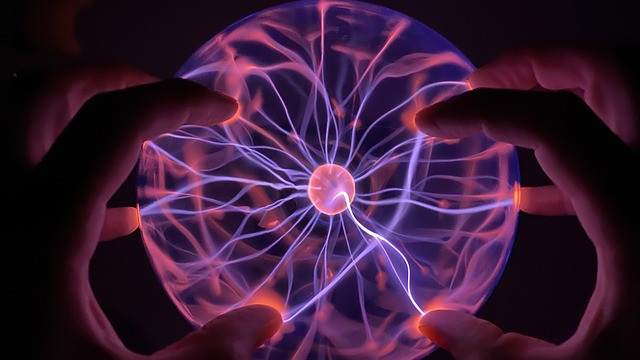Static Electricity
This section explains static electricity covering, static charge and electric fields.
Static Charge
Static electricity refers to the build-up of electric charge on the surface of objects. This occurs when electrons are transferred between materials, typically through friction. When an object gains or loses electrons, it becomes charged. If an object gains electrons, it becomes negatively charged, and if it loses electrons, it becomes positively charged.
Key Points:
- Electron transfer is responsible for static charge. Electrons are the negatively charged particles that move between materials.
- Objects with like charges repel each other (e.g., two negatively charged objects or two positively charged objects), whereas objects with opposite charges attract each other (e.g., a negatively charged object and a positively charged object).
Example:
- If you rub a balloon against your hair, electrons move from your hair to the balloon. As a result, the balloon becomes negatively charged, and your hair becomes positively charged. The balloon will attract small bits of paper or even your hair because of the opposite charges.

Electric Fields
An electric field is a region around a charged object where another charged object experiences a force. The strength and direction of this force depend on the charge and the distance between the objects.
- Electric field lines are used to represent the electric field. These lines point away from positive charges and towards negative charges.
- The closer the electric field lines are to each other, the stronger the electric field in that area.
- The direction of the electric field is always from positive charges to negative charges.
Key Points:
- Electric fields can be visualised using field lines: lines that radiate outward from positive charges and converge towards negative charges.
- The force experienced by a charged object in an electric field depends on the magnitude of the charge and the strength of the field.
- The strength of the electric field depends on the size of the charge and how far away the test charge is from the source charge. The closer the test charge is to the source charge, the stronger the force it will feel.
Example:
- Imagine two charged objects: one positively charged and the other negatively charged. The electric field lines would point from the positive charge to the negative charge, indicating the direction of the force that a positive test charge would experience.
Summary
- Static charge occurs when electrons are transferred between materials, making one object positively charged and the other negatively charged.
- Electric fields are regions where charged objects experience forces, and these fields can be visualised using field lines pointing from positive to negative charges.
- The strength and direction of the electric field depend on the size and sign of the charge, as well as the distance between the charges.
Understanding static electricity and electric fields is important for explaining how charges interact and how many everyday phenomena, such as lightning and the operation of electrical devices, occur.
